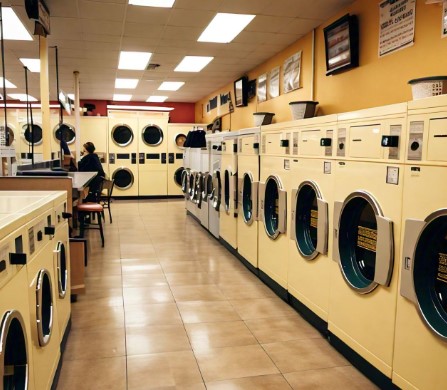
The idea of owning a laundromat as a passive investment is appealing—steady income with minimal effort sounds like a dream come true. But does the reality live up to the expectation? Let’s break it down the laundromat investment
The Reality of “Passive” Income
Laundromats Are Not Entirely Passive
While laundromats can be less hands-on compared to other businesses, calling them a passive investment might be a stretch. You’ll still need to handle maintenance, manage supplies, deal with customer complaints, and ensure the machines are functioning properly. Many laundromat owners find themselves more involved than they initially anticipated.
However, hiring a reliable manager or a service to handle day-to-day operations can make the investment more passive, but it will also cut into your profits.
Steady Demand and Cash Flow
On the positive side, laundromats tend to enjoy steady demand. People always need to wash clothes, and this basic necessity creates a reliable revenue stream. Cash flow is typically immediate, and with efficient operations, the margins can be quite attractive.
Financial Considerations
Initial Investment and Ongoing Costs
Starting a laundromat requires significant upfront investment. Purchasing commercial-grade machines, securing a suitable location, and setting up the business can be expensive. Beyond that, there are ongoing costs, including utilities, maintenance, and repairs. Equipment depreciation is another factor to consider—machines wear out and will need replacement over time, which can be a significant expense.
Return on Investment (ROI)
The ROI for laundromats can vary widely. In ideal conditions, with low competition and high customer demand, returns can be quite favorable, sometimes yielding profit margins between 20% and 35%. However, less favorable conditions, such as high competition or an unideal location, can significantly reduce profitability.
Risks and Challenges
Location Matters
The success of a laundromat is heavily dependent on location. A laundromat in a high-traffic, densely populated area is more likely to succeed than one in a quieter area. Investors need to thoroughly research and choose the location carefully, as poor location choice can lead to underperformance and potential losses.
Competition and Market Saturation
In areas with several laundromats, competition can be fierce. You might have to lower prices or offer additional services to attract customers, which can erode profit margins. Additionally, new entrants in the market could pose a threat to your business.
Myth Busters
Myth 1: Laundromats require no personal involvement.
Reality: Although it may sound like running a laundromat means you can step back and start collecting an effortless income stream, that is simply not the case. You have to get involved, actively, on a regular basis, with respect to making sure maintenance is being performed, ensuring the customers’ issues are being addressed, or making sure the daily operations are running smoothly. It’s anything but a passive investment. Even if you bring in a manager to oversee your operations, you can’t afford to be disengaged.
Myth 2: Laundromats always bring in big money.
Reality: Though it is nice to think a laundromat is vastly profitable, how much money is made really varies. Variables include location, amount of local competition, and the quality of the management. Therefore, this isn’t always the way to go if a person wants to ensure that he is going to bring home big bucks.
Myth 3: Any location will do for a laundromat.
Reality: Location is a critical component. The laundromat has to be in a busy area of high population with people lacking personal laundry facilities. Not just any location will work. Success is mainly dependent on the characteristics of the site.
Myth 4: Laundry machines last forever.
Reality: Washing machine appliances are not designed to last; they break down and will need repairing or replacing, which is very costly. It is wise to plan financially for these inevitable expenses beforehand.
Myth 5: Very little industry knowledge is needed.
Reality: Getting into business in a laundromat, oblivious to the ground facts, is very costly. The various operations in the industry, like equipment maintenance and customer handling, require a good understanding for a successful investment. It’s more complicated than what might have seemed from the outside.
Conclusion: Is It Worth It?
So, is a laundromat a truly good passive investment? It can be, but it’s not guaranteed to be hands-off. While the business can generate steady and reliable income, it often requires more active management than some investors expect.
If you’re looking for a hands-off, purely passive investment, a laundromat may not be the ideal choice unless you’re prepared to delegate and absorb the associated costs. However, if you’re willing to put in some effort or hire help to manage operations, a laundromat can be a profitable venture that provides a decent return on investment you can use automated software for it. In the end, the level of passivity you can achieve depends on how much you’re willing to invest in time, management, and resources with POS software line Fabklean.

Love these practical tips! Starting strong with a clear thesis and staying organized are
game-changers for me. Can’t wait to apply these ideas in my own work.
Keep the great content coming!
Is owning a laundromat really a set-it-and-forget-it type of investment, or does it require constant attention and involvement to ensure success? Can you truly achieve passive income from this business, or is it more hands-on than it seems?”,
“refusal